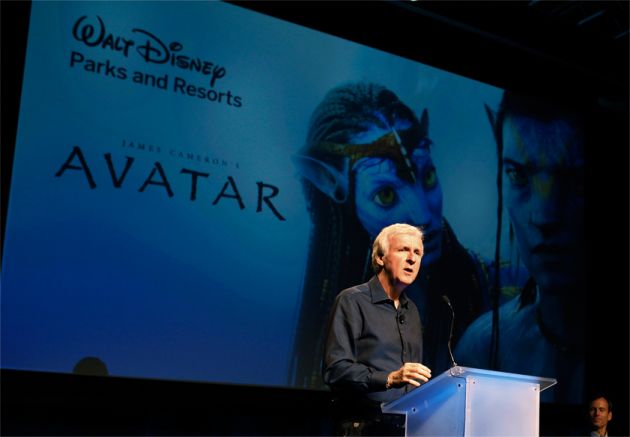Avatar director donates dive craft, says 3D movie due in fall

(Reuters) Cameron, who is focused now on pre-production for the sequels to his blockbuster movie "Avatar," said he hoped the donation to the non-profit research facility in Cape Cod, Massachusetts, would bring the technology he developed for the undersea craft into the mainstream.
In a telephone interview marking the one-year anniversary of his nearly 7-mile-deep (11.2-km-deep) dive in the western Pacific, the Oscar-winning director said that scientists had identified more than 60 new species, including bacteria, from material he brought back.
Cameron expects to release a long-awaited 3D movie of the dive in movie theaters in the fall of 2013.
Cameron also directed the 1997 movie "Titanic" as well as undertaking and filming several underwater expeditions exploring the wreck of the ship in the North Atlantic.
Q: What impact do you hope the Deepsea Challenger's transfer to Woods Hole Oceanographic Institution (WHOI) will have on continued research?
A: It drives public attention to the need for new technology and funding for deep ocean work, which WHOI is the leader of in this country. It will have a very specific and immediate effect of new vehicles and new vehicle platforms, our cameras, our communications, our syntactic foam and battery systems, they'll incorporate into their future stuff. The way we solved problems is so outside the box, they're eager to bring that into their projects.
I could leave the sub in my barn, but that's not going to do anybody any good while I'm off making "Avatar" films for the next few years. I want this technology to be out there and dynamic and adaptive.
Q: What are some of the new species and findings that have come from this dive?
A: I met with Doug Bartlett out of the Scripps Institute of Oceanography (who was the chief scientist on the dive expedition) and he said there are at least 68 new species coming out of this, and that includes a number of arthropods and invertebrate animals and a lot of new bacteria.
Q: What will audiences experience when your 3D movie of this dive is released.
A: "The Deepsea Challenge" is coming out this fall. You go on the journey. It's about the team of these young guys and how they tackled the problems and overcame a lot of hurdles and set-backs. They got to see some pretty amazing stuff and got to bring back the footage in 3D. You'll feel like you've been through the whole thing, including actually diving inside the sub. I was jammed into this 42-inch (106 centimeter) sphere with all this equipment and a 3D camera with me at all time.
Q: How has filming underwater in 3D with this dive and past Titanic dives helped you as a Hollywood director?
A: There's always been a good synergy between the technology that's been developed for these expeditions and the technology that's used for the films. "Avatar" was shot with a second generation of the 3D cameras that were built for my 2001 Titanic expedition. We're constantly building and improving the technology. Some of the things that went into building the Deepsea Challenger cameras, which had to be so tiny, will probably be used in action cameras in the next "Avatar" films.
The odds are other filmmakers will use this technology before me because my company, Cameron Pace Group, supplies cameras to most of the big movies that are shooting in 3D. We develop something new, I use it on an expedition, and while I go off and write and design and fool around in pre-production, five other movies have gone out and used the cameras in the meantime. That was the case even when I had made "Avatar," a number of other films had already used those cameras.
(Reporting By John Gaudiosi in North Carolina, editing by Jill Serjeant and Cynthia Osterman)